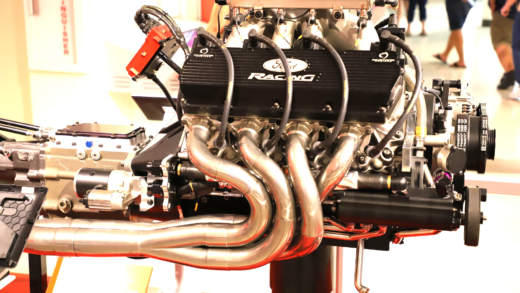Ancient Egyptian cosmetics for men included kohl and oils, serving both practical and aesthetic purposes. Makeup was significant in religious contexts, enhancing spiritual connections. The application process involved precise tools and techniques, reflecting societal grooming standards. Gender roles were evident, with men’s cosmetics linked to power and status, while women’s use emphasized beauty and fertility.
Types of Cosmetics Used by Ancient Egyptian Men
Ancient Egyptian cosmetics played a significant role in the daily lives of men, showcasing a rich palette of materials and techniques. Ancient Egyptian cosmetics included products like kohl, oils, and unguents that not only enhanced appearance but also served practical purposes.
- Kohl: This was perhaps the most iconic cosmetic used by men. Made from a mixture of galena (a mineral), kohl helped define the eyes and protect against glare from the sun. The application of kohl was both aesthetic and functional.
- Oils: Men applied scented oils to their bodies and hair. These oils, often infused with fragrances like myrrh or frankincense, were not only used for moisturizing but also as a sign of status and hygiene.
- Unguents: Thick creams made from animal fats mixed with various ingredients were popular. They provided protection from the sun and dryness, making them essential in a hot climate.
These cosmetics were not just about beauty; they were intertwined with daily life, reflecting the values and practices of the time. The use of these products was a common practice, indicating a society that valued grooming and self-presentation.
Reasons Men Wore Makeup in Ancient Egypt
The motivations behind men’s use of cosmetics in ancient Egypt were multifaceted. Firstly, cosmetics were integral to cultural identity, symbolizing social status and aesthetic sensibility. Men wore makeup not only for personal enhancement but also as a reflection of societal norms.
- Cultural Significance: Makeup was part of rituals and daily life, believed to have protective qualities against evil spirits and bad luck.
- Aesthetic Appeal: Just like women, men sought to enhance their features. The application of kohl around the eyes was not merely for looks; it was a statement of style.
- Practical Reasons: In the harsh Egyptian climate, cosmetics provided protection from the sun and skin irritations.
Thus, the use of cosmetics was deeply embedded in the culture, reflecting a blend of practicality and artistry.
Differences in Cosmetics Use Between Genders
In ancient Egypt, the application and types of cosmetics differed significantly between men and women, showcasing the distinct societal norms regarding gender roles. While both genders used cosmetics, the styles and purposes varied.
- Types of Products: Men primarily focused on kohl and oils, while women had a broader range of cosmetics, including blush and eye shadow.
- Application Techniques: Men typically applied cosmetics more subtly, emphasizing functionality over decoration. Women, conversely, used cosmetics to create more pronounced beauty looks.
- Societal Expectations: Makeup for men was often associated with power and authority, while women’s cosmetics were linked to beauty and fertility.
These distinctions highlight how ancient Egyptian cosmetics reflected and reinforced gender roles, providing insight into the values of their society.
Cultural Significance of Cosmetics in Ancient Egypt
Ancient Egyptian cosmetics held profound spiritual and social significance. Men believed that cosmetics could enhance not just their appearance but also their connection to the divine. The use of makeup was intertwined with various cultural beliefs that defined beauty and protection.
- Spiritual Beliefs: Many Egyptians thought that cosmetics had protective qualities. For instance, kohl was believed to shield the wearer from evil spirits. This made its application a sacred ritual, often performed with care and intention.
- Social Status: Wearing makeup was a marker of social standing. Men adorned themselves with cosmetics to signify their place in society, reflecting wealth and power. The more elaborate the makeup, the higher the status.
- Beauty Standards: Beauty was seen as a reflection of order and balance. Men used cosmetics to align with these ideals, enhancing features that aligned with societal expectations.
This cultural context reveals that ancient Egyptian cosmetics were much more than mere beauty products; they were vital in shaping identity and societal roles.
Dual Roles of Men’s Makeup
In ancient Egypt, cosmetics served dual purposes—functional and aesthetic. Men utilized makeup not only for enhancement but also for practical benefits in their daily lives.
- Functional Benefits: Cosmetics provided protection against harsh environmental conditions. For example, oils helped moisturize skin and hair, shielding them from the dry, hot climate.
- Aesthetic Enhancement: Just like women, men sought to improve their appearance. The application of kohl around the eyes was both a style statement and a means to draw attention to their features.
- Fashion Statement: Makeup was also a fashion accessory. Men used various products to express individuality and align with the latest trends in society.
Thus, the use of cosmetics among men in ancient Egypt reflects a sophisticated understanding of beauty that blended practicality with style.
Materials Used in Ancient Egyptian Cosmetics
The materials in ancient Egyptian cosmetics reveal much about their society, trade, and values. Men primarily used natural ingredients, which reflected their connection to the environment.
- Kohl Ingredients: Kohl was primarily made from galena, a mineral rich in lead. This not only provided the desired color but also had protective qualities for the eyes.
- Oils and Unguents: Oils were often derived from plants like sesame or olive, showcasing the importance of agriculture in their economy. The use of fragrant oils indicated trade connections with other cultures.
- Trade and Resources: The diverse materials used in cosmetics indicate a robust trade network. Ingredients like myrrh and frankincense were imported, showing how ancient Egyptians valued luxury and sophistication.
These materials tell a story of a society that valued not just aesthetics but also the practical application of nature’s resources in their daily lives.
Makeup in Religious Contexts for Men
Ancient Egyptian cosmetics were integral to religious ceremonies and rituals. Men applied makeup not merely for aesthetic reasons but also to enhance their connection with the divine. The use of cosmetics was often seen as a means to invoke the favor of the gods.
- Ritual Significance: In many religious ceremonies, the application of kohl and other cosmetics was a sacred act, believed to purify and prepare the individual for spiritual encounters.
- Divine Representation: Men adorned themselves with cosmetics to emulate the gods, who were often depicted with elaborate eye makeup. This practice reinforced the belief that beauty was a reflection of divine order.
- Offerings to the Gods: The use of specific materials in cosmetics, such as myrrh, was also part of offerings to deities, signifying respect and devotion.
Thus, makeup in religious contexts for men was deeply rooted in spirituality, highlighting the intersection of beauty and faith in ancient Egyptian culture.
Application of Cosmetics by Ancient Egyptian Men
Applying cosmetics was a refined art in ancient Egypt, with men using various tools and techniques to achieve their desired looks. The process was often meticulous, reflecting the importance of grooming in their society.
- Tools Used: Men commonly used applicators made from wood or bone to apply kohl. These tools allowed for precise application around the eyes.
- Application Techniques: The application of kohl typically involved drawing a line along the upper and lower lash lines. Oils were massaged into the skin to ensure hydration and fragrance.
- Daily Ritual: For many men, the application of cosmetics was a daily ritual, akin to modern grooming practices. This attention to detail underscored the societal expectation for men to present themselves well.
The meticulous application of cosmetics by ancient Egyptian men illustrates the cultural significance of grooming and personal presentation.
Gender Roles Reflected in Ancient Egyptian Cosmetics
The use of cosmetics in ancient Egypt provides insight into gender roles and societal expectations. Men’s application of makeup was often linked to power and status, while women’s use was associated with beauty and fertility.
- Power Dynamics: Makeup for men was often seen as a means to convey authority. Those in positions of power utilized cosmetics to enhance their presence, reflecting societal norms that linked appearance with leadership.
- Contrasting Uses: While men focused on enhancing features that showcased strength, women used cosmetics to emphasize softness and beauty, highlighting the distinct gender norms of the time.
- Social Commentary: The societal implications of cosmetic use reveal underlying attitudes toward gender. Men’s makeup was often accepted as a sign of masculinity, while women’s use faced more scrutiny.
Ultimately, the use of cosmetics in ancient Egypt was not just about beauty; it was a complex interplay of gender, power, and cultural identity.





Comments are closed.